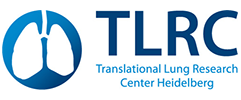Overview
State-of-the-art flow cytometers combine laser technology with fluorescent-activated cell sorting (FACS) to determine a plethora of cell parameters simultaneously, such as cell size, granularity, cell viability, proteins or cellular DNA and RNA. Detection of specific cellular biomarkers using fluorochrome-conjugated antibodies or probes belongs to the most popular application. In contrast to fluorscence microscopy, flow cytometry cannot easily locate a component within different subcellular compartments of the cell. Instead flow cytometry is a high-throughput method to quantify and differentiate heterogeneous cell populations, including rare cell types.
In lung research, flow cytometry has been widely used for analysis of various cell populations involved in lung inflammation and pathogenesis. The usage of single-cell suspensions allows for quantitative and qualitative analysis of cells in the lung. Therefore, multiparameter flow cytometry is well established as fundamental technique for comprehensive quantification of various cellular subpopulations in lung research.
The FACS laboratory provides access to a BD FortessaLSR, which allows simultaneous detection of up to 14 parameters. We also provide training and support in developing appropriate experimental designs to scientists of the Translational Lung Research Center Heidelberg (TLRC) and the German Center for Lung Research (DZL).
Contact:
Dr. Michelle Paulsen
Abteilung Translationale Pneumologie
Translational Lung Research Center Heidelberg (TLRC)
Universitätsklinikum Heidelberg
Im Neuenheimer Feld 156
69120 Heidelberg
Germany
Tel.: +49-6221/56-32952
Fax: +49-6221/56-4504
E-Mail

